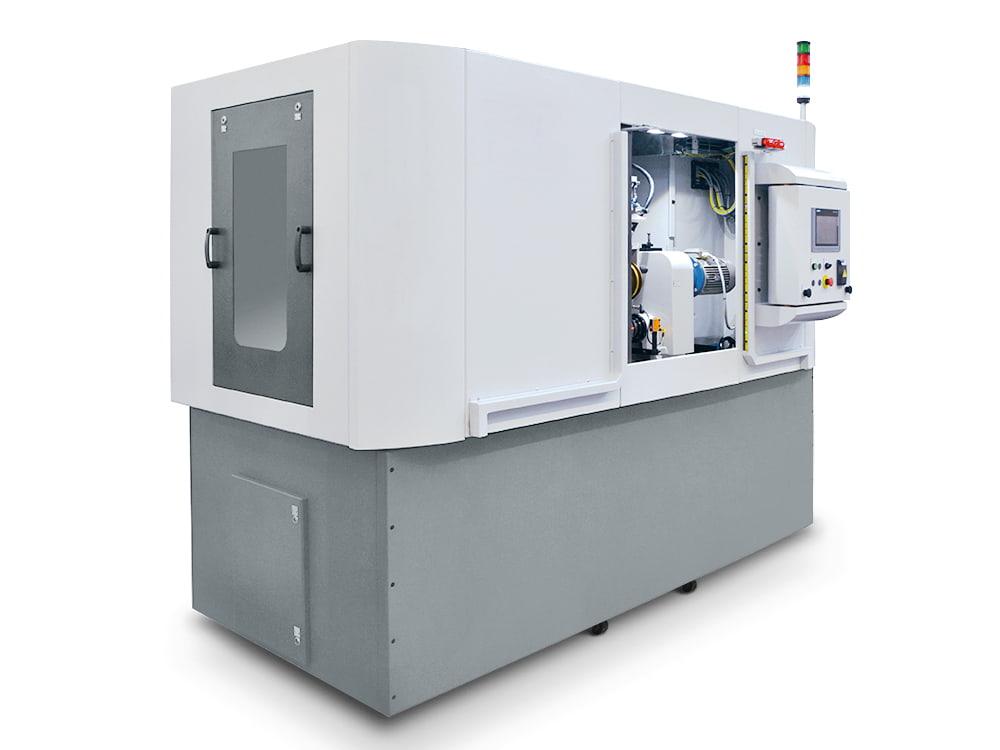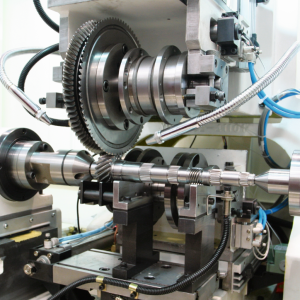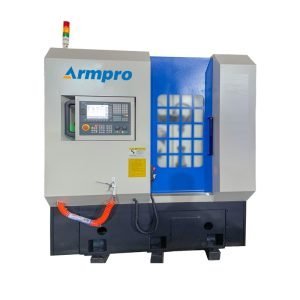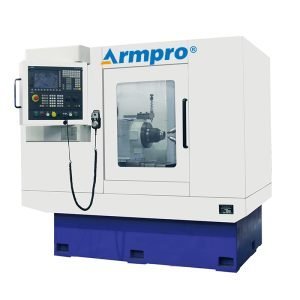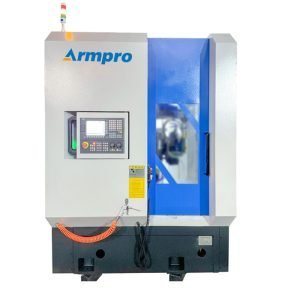Best Practices for Enhancing CNC Gear Chamfering Efficiency
Introduction
Doing the manufacturing of gears is tough. I have encountered some very tough challenges in my years as a CNC business owner. Chamfering, or beveling sharp gear edges, is necessary for the performance of gears as well as for safe gear function, but it can become one of the most expensive and time-consuming processes if not done according to good practices.
That is why I decided to talk about the means by which CNC gear chamfering capability can be maximized. Done properly, chamfering leads to more efficient processes and better quality with less expense. You will be cutting chamfers like a pro by maximizing your tools, machines, and maintenance efforts. Read on with me then in this guide as I give you some tips and tricks to step up your gear game!
Your tools, machines, and maintenance strategies are optimized to achieve faster cycle times, longer tool life, and superior finish quality, all at lower operating costs. It does entail a wee bit of hard work in the beginning, but the dividends it pays over time are tremendous. Follow along in this comprehensive post to learn some tips that will enhance your chamfering experience.
1. Understanding CNC Gear Chamfering
Before jumping into optimization specifics, let's quickly cover some chamfering basics for the uninitiated.
What is CNC Gear Chamfering?
CNC Gear Chamfering is a very durable application that uses simple CNC programming to allow CNC machines to chamfer gears, effectively removing the sharp teeth edges with smooth class of ease. This improves gear functionality and safety in a few ways:
- Getting rid of burrs and sharp edges after gear cutting.
- Prevents Teeth from Chipping and Cracking by Rounding Tooth Corners
- Decreases friction and mechanical noise while gears meshing
Special chamfering tools, such as chamfer mills and deburring tools, are also used in the process. When combined with CNC, these tools can chamfer gear teeth edges accurately, ensuring an effective and measurable process.
Finally, chamfering is one of the last order sequence acts done after cutting the teeth of the gear by using a CNC Gear Cutting Machine. Specialized chamfering cutters (e.g., chamfer mills, deburring tools,/…) are shaping the gear edges by material removal at an angle.
CNC gear chamfering, when performed correctly using the best practices above, simultaneously improves manufacturing consistency and throughput as a result while reducing consumable tool wear expense. With this, let us get into the specifics of how chamfering is optimized!
2. Selecting the Right Chamfering Tools
As with most manufacturing processes, selecting suitable tools is critical for gear chamfering success. Let's explore some key considerations when choosing chamfering tools:
Types of Chamfering Tools
There are a few common types of tools used, each with their own strengths:
Chamfer mills:
Chamfer end mills have a uniquely ground tip angle that cuts the desired gear teeth bevel profile in a single pass. This integrated tip angle makes setup easy by avoiding the need to tilt the cutting tool or perform additional operations to achieve the chamfer dimensions. These end mills feature multiple straight or helical flutes to efficiently remove material and are offered in a range of standard chamfer widths. Their simple operation and accuracy for repetitive jobs make chamfer mills a versatile option.
Deburring tools:
Deburring tools use a completely different approach optimized for removing small unwanted burrs or sharp protuberances left over from prior cutting operations. Often consisting of crossed-style tips, the multiple cutting edges shear away slivers of material with light axial passes. Available in miniature sizes, given their specialized purpose down to removing tiny edge defects. Helpful for semi-finishing work prior to finer chamfering.
Chamfering inserts:
Chamfering inserts screws or clamps into indexable tool holders, much like other replaceable cutting tips. They enable very high chamfering feed rates thanks to advanced substrate and coating materials. The inserts feature geometries tailored specifically for gear chamfering needs. Their interchangeability also facilitates fast changeovers to replace worn or damaged cutting edges. For flexible high-volume CNC chamfering tasks, our example inserts are in a class of their own. While still offering faster overall setup time than chamfer mills.
Mills.
You will have to debate which choice is easier based on batch sizes, changeover and dimensional accuracy targets. Chamfer mills are more friendly to small shops that don´t process chamfers with a high volume. Indexable Inserts -Fast, modular operation>best for high production environments- Whichever way the tool selection is implemented, it has ripple effects on several dimensions of operational efficiency and costs.
Personally, I prefer chamfering inserts because they are quick and easy to use. Chamfer mills are well-suited for small-volume orders. Try a couple to see what works best for you.
Tool Material and Coating
The material and coating of your chamfering tool also impact it.
Carbide hard and durable tools are preferred when attacking the gear steel chamfering. High-Speed Steel — Use this grade on softer metals such as aluminum for cheaper chamfering.
On the flip side, priming chamfering tools with wear-resistant coatings like TiN or TiAlN extend the life of the tool when utilized under more heavy-duty operations. This increases consistency and saves costs on tool replacement.
Select material and coatings to accommodate the materials your gear will be made from; this allows for consistent chamfering and maximizes tool life.
3. Optimizing CNC Machine Settings
The next important element is to adjust the CNC machining strategies and parameters accordingly. Top-tier cutting tools set the stage, but proper speeds, feeds, and motions take it to the dimension.
Speed and Feed Rates
As well, your programmed rotational and linear feed velocities have a direct influence on cutting forces, temperatures, and tool life. This results in accelerated wear, deflection problems, and sometimes even immediate insert chipping due to overloads. Cycle times are increased due to low feeds and speeds. Thus, it is important to find the sweet spot for your tools and application. Hence start with lower values and increase step by step.
Tool Path Strategies
Trusted toolmakers offer their product’s cutting conditions. These are really valuable beginnings. More tweaking is necessary, of course, to adjust to the reality of uneven machine stiffnesses, control accuracies, and coolant flows. Be not afraid to extend these to the far reaches — optimized parameters likely well above what conventional wisdom might suggest! In short:
- Helical interpolation:Smooth spiral tool movement along gear teeth. Prevents uneven chamfers.
- Contouring:Precisely traces gear profile for consistent chamfer depths.
- Peck chamfering:Makes repeated axial cuts for deeper chamfers without deflection.
I suggest contouring for most gear types, with pecking reserved for deep chamfering jobs.
Coolant and Lubrication
Finally, incorporate high pressure coolant nozzles focused directly at the cutting interface. The extreme heat and friction of gear chamfering demands effective coolant to avoid built-up edge, plastic deformation, and other undesirable effects that degrade precision and tool life. Position the nozzles as close to the inserts as possible while avoiding interference. Testing various angles can further improve penetration. Treat your coolant system as an equally vital machine component instead of an afterthought.
4. Maintenance and Tool Management
To sustain efficiency long-term, gears and tools need proper care:
Regular Maintenance
On the machine side, build schedules for thorough cleaning, lubricating key components, and inspecting/replacing worn parts. Left unaddressed, accumulated debris, stiction, and creeping runout take a toll on precision and uptime. Treat your prized gear cutters like the high-performance machines they are!
Tool Management
Likewise, effectively track tool life cycles and inventory chamfering inserts to minimize production disruptions. Document optimal insert grades and cutting data for each workpiece application. Organize tooling cartridges and inserts to accelerate change-overs. While insert indexes streamline tip replacements, consistently following usage logs and replacing worn inserts on schedule is key to avoiding tool failures at inopportune times.
Building disciplined maintenance and tool management frameworks requires grit and dedication but pays dividends for years to come. View the time invested here as a profitable insurance policy enabling stable production and minimal disruptions down the road!
Conclusion
Phew, we covered a lot of ground today! Here’s a quick recap of the best ways to enhance CNC gear chamfering efficiency:
- Choose suitable chamfering tools (type, material, coating)
- Optimize CNC programs (speeds, feeds, paths)
- Incorporate effective cooling strategies
- Perform consistent machine/tool maintenance
- Organize tools and document processes
Putting these chamfering best practices into play takes some extra work. But the boost in manufacturing performance makes it well worth it! Your gears will come out safer, quieter, and more resilient thanks to quality chamfering.
Don't forget to share this post!
Related Products
CONTACT US
Tell us your raw material and working details to get quotations within 24 hours.
WhatsApp Us: +86 159 27 555863

Want the best price & newest metal working machinery buying guide,tips and trends sent straightly to your box?Sign up for Armpro's monthly newsletter,we're free for your consultation and Offer you the most suitable working solutions!
The Buyer's Guide
- Tapping Machine: The Ultimate Buying Guide in 2024
- Electric Tapping Machines:the Ultimate Buying Guide in 2024
- Drilling Machine: The Ultimate Buying Guide in 2024
- Drilling milling Machine:The Ultimate Buying Guide in 2024
- CNC Tapping Machine :The Complete Buying Guide in 2024
- Pipe chafering Machine:The Complete Importing Guide in 2024
- Radial drilling Machine:The Complete Buying Guide in 2024
- Thread rolling Machine:The Complete Buying Guide In 2024
- Pillar Drilling Machine:The Ultimate Buying Guide in 2024
- Drilling And Tapping Machine:The Complete Buying Guide in 2024




